Cool fall temperatures invite change in the garden. You’ll notice leaves shifting colors, perennials dying back, and seed heads poking out across landscapes. It appears as if everything is getting ready to go to sleep, including animals! A few tasks during this season help ensure your garden stays in tip-top shape while so much change occurs.
Some of these tasks are helpful but not imperative for a healthy garden. How you want your winter garden to look depends on your taste and preferences. Opt for a messy, natural style to invite wildlife and create an ecosystem in your backyard. You may prefer geometrical designs and orderliness, and opt for tidy borders with leaf mulch. No style is incorrect, as they all accomplish different goals.
No matter what style you choose to garden with, October is the perfect time to replenish soils, help perennials enter dormancy, and tidy up plant debris. It’s also ideal for cleaning tools and ripening harvests. Do a little work now and you’ll rest easy for the winter. Follow these 13 tasks to keep your garden performing at its best.
Harvest Basket
Veggies can be rinsed off right in the basket. Crafted of pine, birch and oak with a weather-resistant, hand-rubbed oil finish and food-grade vinyl-coated wire to last many years.
Improve Lawn Drainage
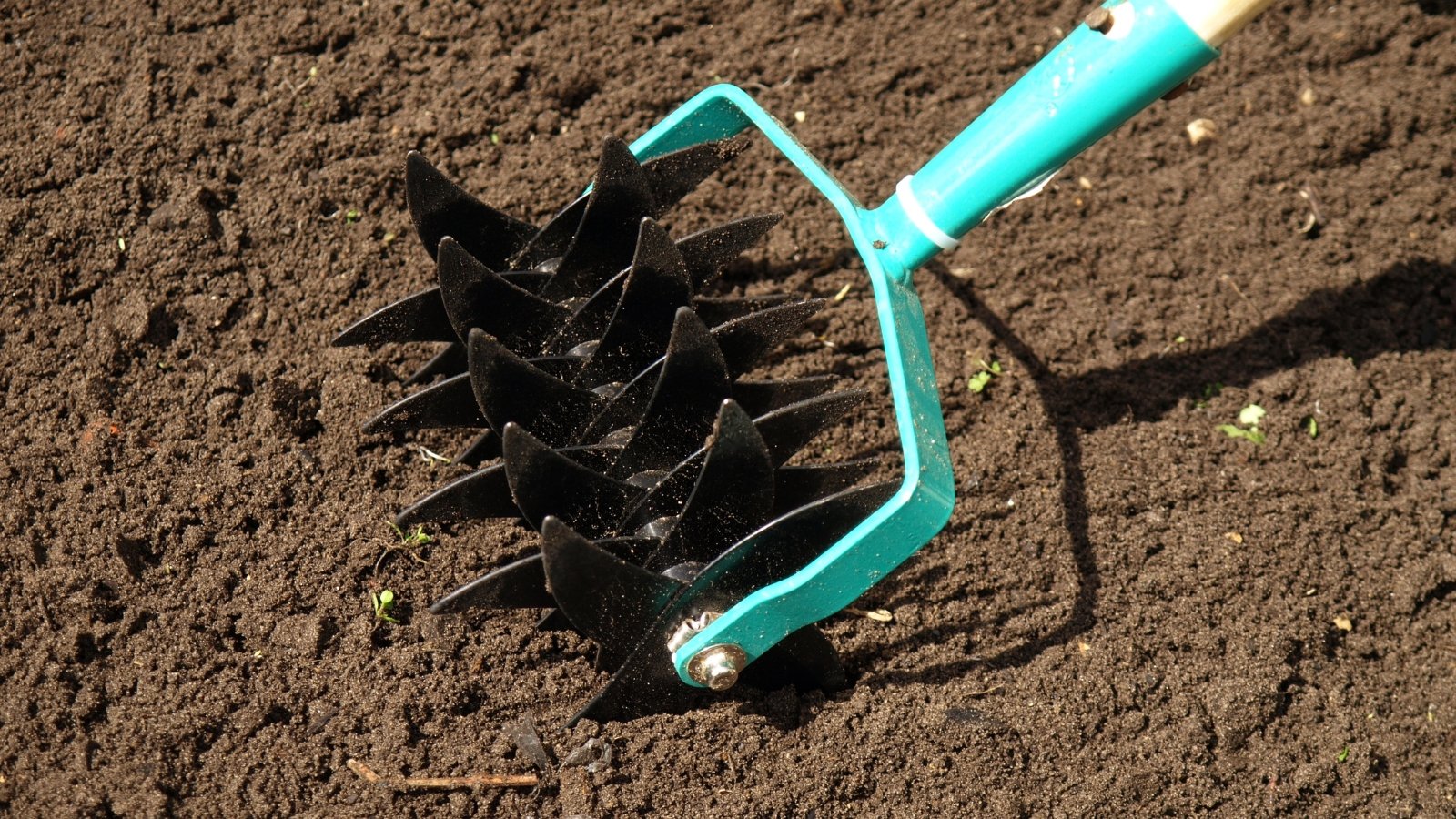
After a summer dry season, lawn soil compresses and forms solid masses. Grass roots struggle to drink water and breathe without air pockets in the soil, and their overall health will decline. Aerate during October to help your lawn prepare for the oncoming wet season.
Aeration is a simple process involving tools with spikes on them. Some have handles for stabbing into the ground, while others rely on your foot to push into lawns. No matter what tool you use, you’ll want to go over the area and poke holes into the soil. The holes let roots breathe, and they aid in draining excess rainfall.
Another beneficial technique for improving lawn drainage is top-dressing the area with compost, mulch, or chopped leaves. Use a mulch dispenser and run it over the lawn, letting small mulch particles fall between grass blades. Compost is the ideal amendment, but leaf mold, organic mulch, or chopped leaves are suitable too.
Where do you get chopped leaves? If you have a lawn mower with a mulch plug, use it on your lawn after the leaves fall. The mower blades chop leaves into tiny pieces that fall into the soil. They’ll decay over winter, providing valuable nutrients while acting as a mulch.
Create Compost
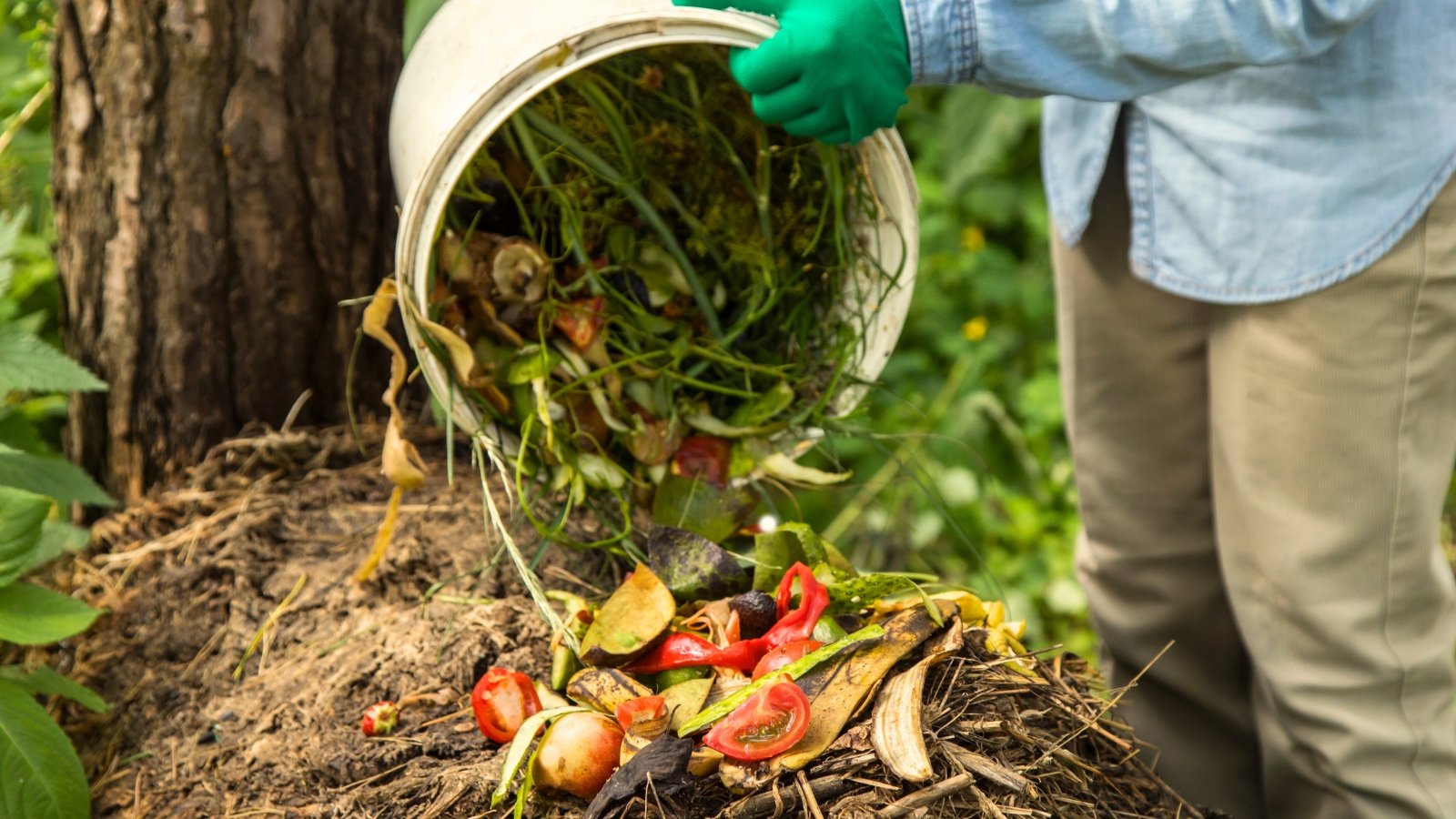
Cool temperatures and short days trigger deciduous trees into sucking the nutrients out of their leaves. As they suck, they change the leaves colors into rich shades of yellow, red, brown, and orange. You know how spectacular fall can be if you live in an area with well-defined seasons.
With all the leaves falling and perennials dying back, you’ll have plenty of garden debris to deal with. The best thing to do with it is create compost. Composting turns raw waste into black, crumbly, humus-rich soil. Use compost as an amendment on garden beds, in potting soil, or to replenish tired lawns. The possibilities are endless, and they all help your soil and the plants that grow in it.
So, how do you make compost? Start by gathering your waste into two separate categories: greens and browns. Greens are fleshy plant material, kitchen scraps, grass clippings, and manure. Browns include dry plant material, fallen leaves, straw, and chemical-free cardboard or paper. Combine the two in a single pile at a ratio of one part greens to three parts browns.
Water your compost pile so it’s 50% moist—it’ll feel like a wrung-out sponge when wet enough. The only thing you’ll have to do now is turn your pile. Using a pitchfork, rotate the materials every other day so they decompose evenly. And that’s it! Where winters are freezing, compost may not start working again until spring. Let the piles freeze and start turning them once the ground thaws.
Convert Lawns Into Beds
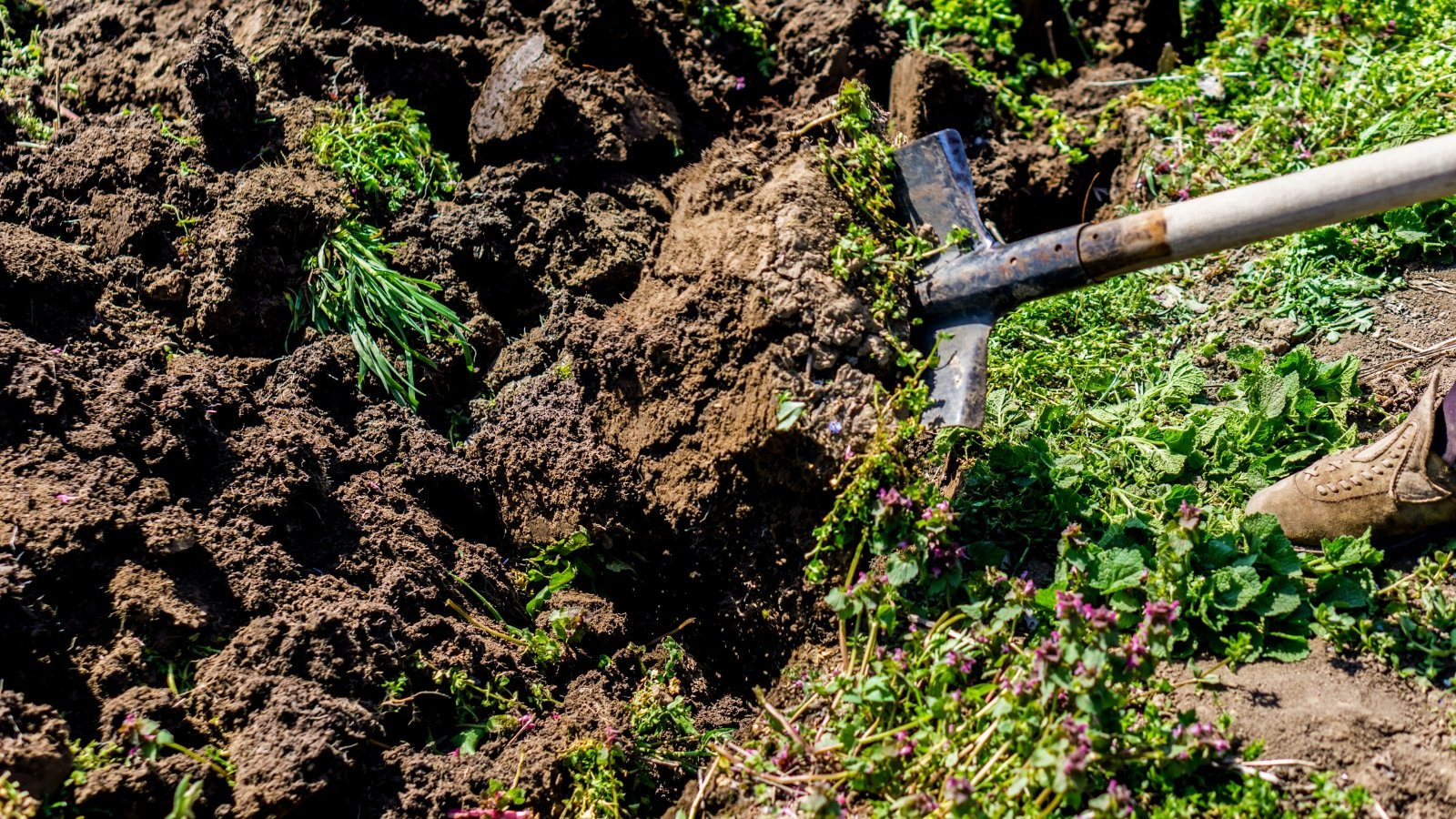
October weather is milder than the summer and ideal for converting old lawns into new garden beds. Start small at the lawn’s perimeters and convert chunks into beds. You’ll preserve some lawn pathways to walk in, and you won’t have to plant too many shrubs or perennials at once.
To convert a lawn into a bare bed, grab a shovel. Dig deep into the lawn and lift chunks of it out. Compost the grass by turning it over and placing it upside down on the soil. It’ll die without access to sunlight, and then it’ll start to decompose. After a month or two, the site will be ready for planting.
Add compost or mulch on the new beds to further boost their soils. Some grasses or weeds may sprout as your new plants establish themselves. Simply pull them and leave them on top of the ground to decay. Fresh beds are perfect for sowing winter annuals or spring-blooming perennials and transplanting new shrubs. However you decide to use them, the animals around you will thank you for adding nectar, pollen, and habitat space to the environment.
Harvest Regularly
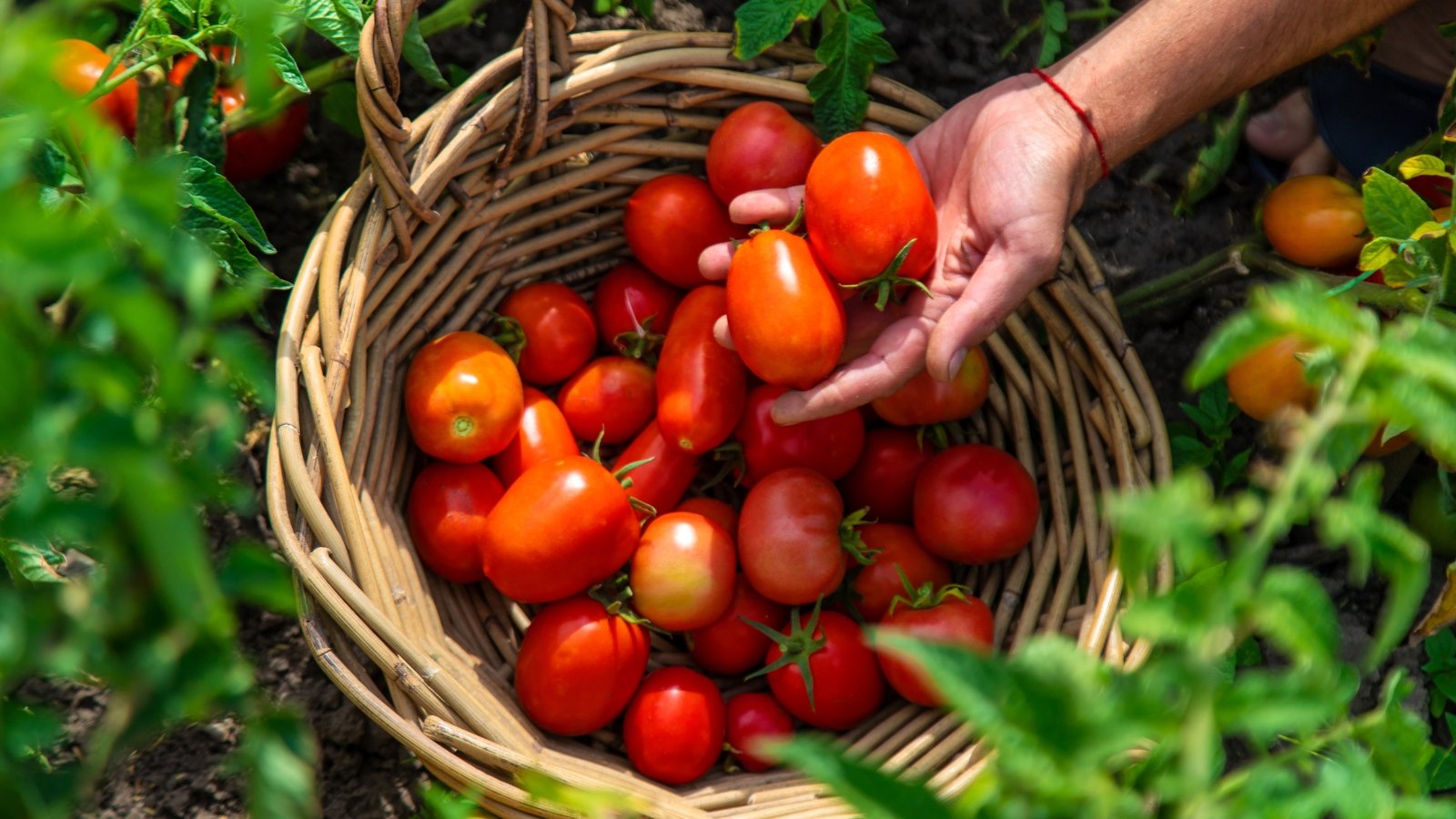
Late fall urges vegetables to ripen, meaning you’ll have red tomatoes, apples, and peppers by the basketful. If you leave them on their stems too long, they’ll overripen and turn mushy, inviting pests, birds, and squirrels. Keep picking fruit to mitigate these issues.
Continuous picking urges crops to produce more flowers and fruits in their effort to reproduce. When you pick their seeds, they think they need to make more for next season. Trick your plants, pick fruits or vegetables, and bring them inside for safekeeping.
Ripen Green Fruit
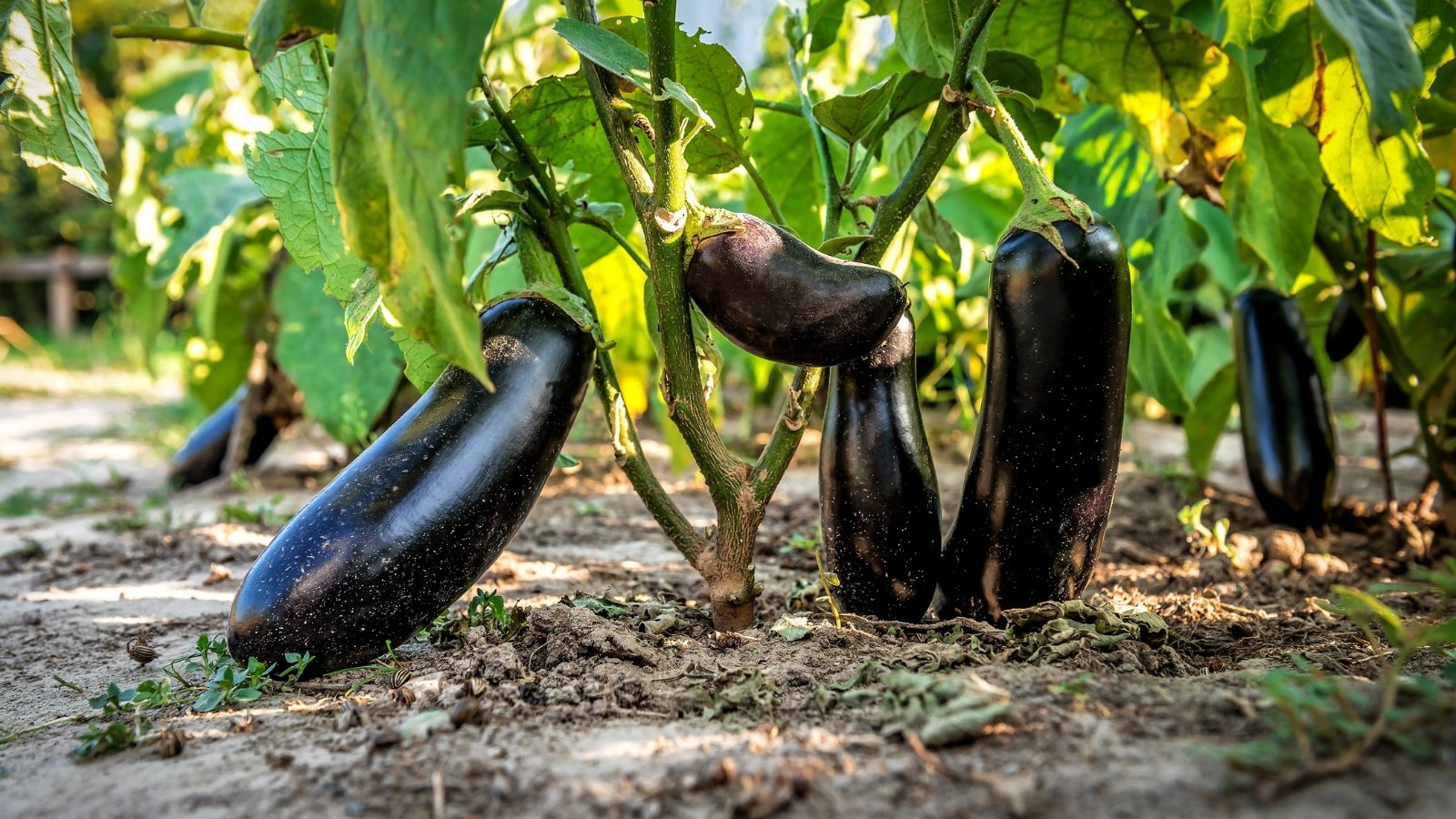
You’ll have unripe, hard fruits and veggies once you harvest all the ripe ones. A few tricks help you turn these useless fruits into ripe, delicious ones. There are two stages: hard pruning and picking green fruit.
Hard pruning removes unnecessary plant parts so the species can focus on ripening their crops. Start by locating stems without ripening fruit, flowers, and small fruit. Remove them all, leaving ripening fruit on their stems. This may seem harsh, but it’s a valuable task that helps vegetables redirect their energy towards ripening.
Start hard pruning these crops in October:
- Squash
- Melons
- Pumpkin
- Okra
- Peppers
- Tomatoes
- Eggplants
- Beans
- Peas
If you live in an area with hard frosts in October, you’ll want to start harvesting any unripe crops before the first frost date. Wrap green tomatoes in paper and place them in cardboard boxes. Store them in a cool, dark location like a basement, pantry, or closet. They’ll take weeks to ripen; use them fresh or in cooking recipes when red-ripe.
Unripe fruits like apples, pears, and plums can stay on the tree until they’re ripe. If animals try to eat the fruits, bring them inside into cold storage. They’ll ripen slowly in a refrigerator so you can enjoy them all winter. Harvest any fruit with holes or cracks. Cut off the damaged parts, and use the fruit in smoothies, jellies, or jams. You can also macerate it with sugar, honey, or syrup.
Remove Diseased Plants
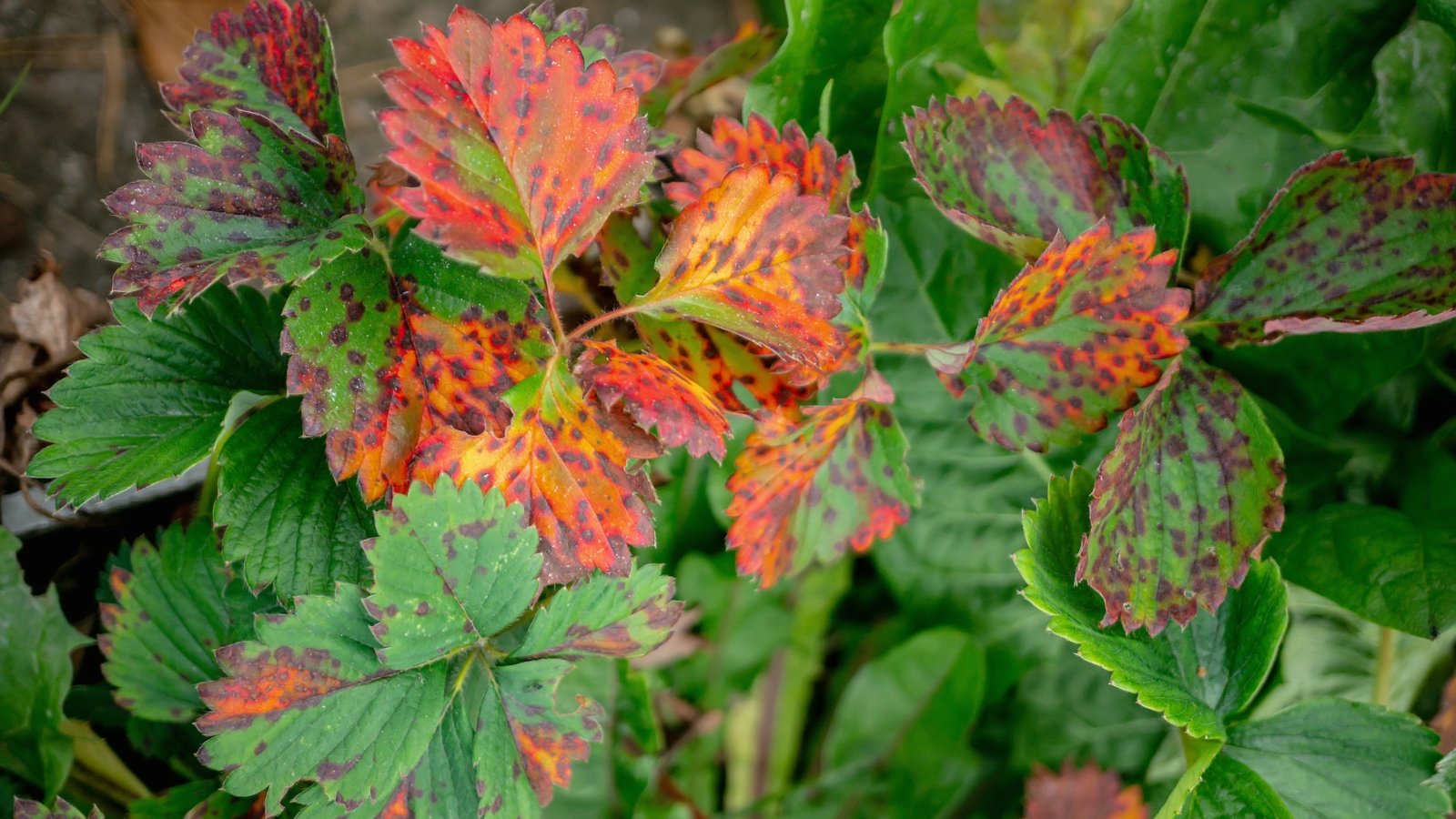
Diseased plants cause havoc in the winter garden! Some, like white mold and fusarium wilt, overwinter in tough bodies. They stay dormant during inhospitable conditions, and then they grow in full force as spring and summer arrive. Remove diseased plant parts to mitigate the damage these organisms cause.
Dead plants and plant parts are okay to leave on top of the soil, so long as they don’t have signs of disease. You’ll want to remove leaves, stems, and roots of any plant that suffered from a plant pathogen during the growing season. If it’s a fruiting crop, remove rotten fruits or flowers on the soil around where it grew.
Put diseased plant parts in hot or cold compost piles to eliminate pathogens. The compost may take longer than normal to kill the diseases, but you’ll recycle your debris without issue in time. First, make sure the compost is fully decomposed before applying it to your garden beds—this may take a month or longer, depending on whether you’re hot or cold composting.
The organisms that work as compost cools are the most pathogen-resistant, and they compete with them for space and resources. They appreciate carbon more than the primary composting organisms. Add a bit of undiseased wood chips or sawdust as compost cools to inject it with disease-fighting microorganisms.
If you don’t have compost, simply dispose of the debris in a plant waste bin. Most cities dispose of the plant debris in ways that mitigate diseases, recycling it into fresh dirt. Put diseased plants in the trash if your city lacks yard waste disposal programs and you’re unable to compost.
Pick Weeds
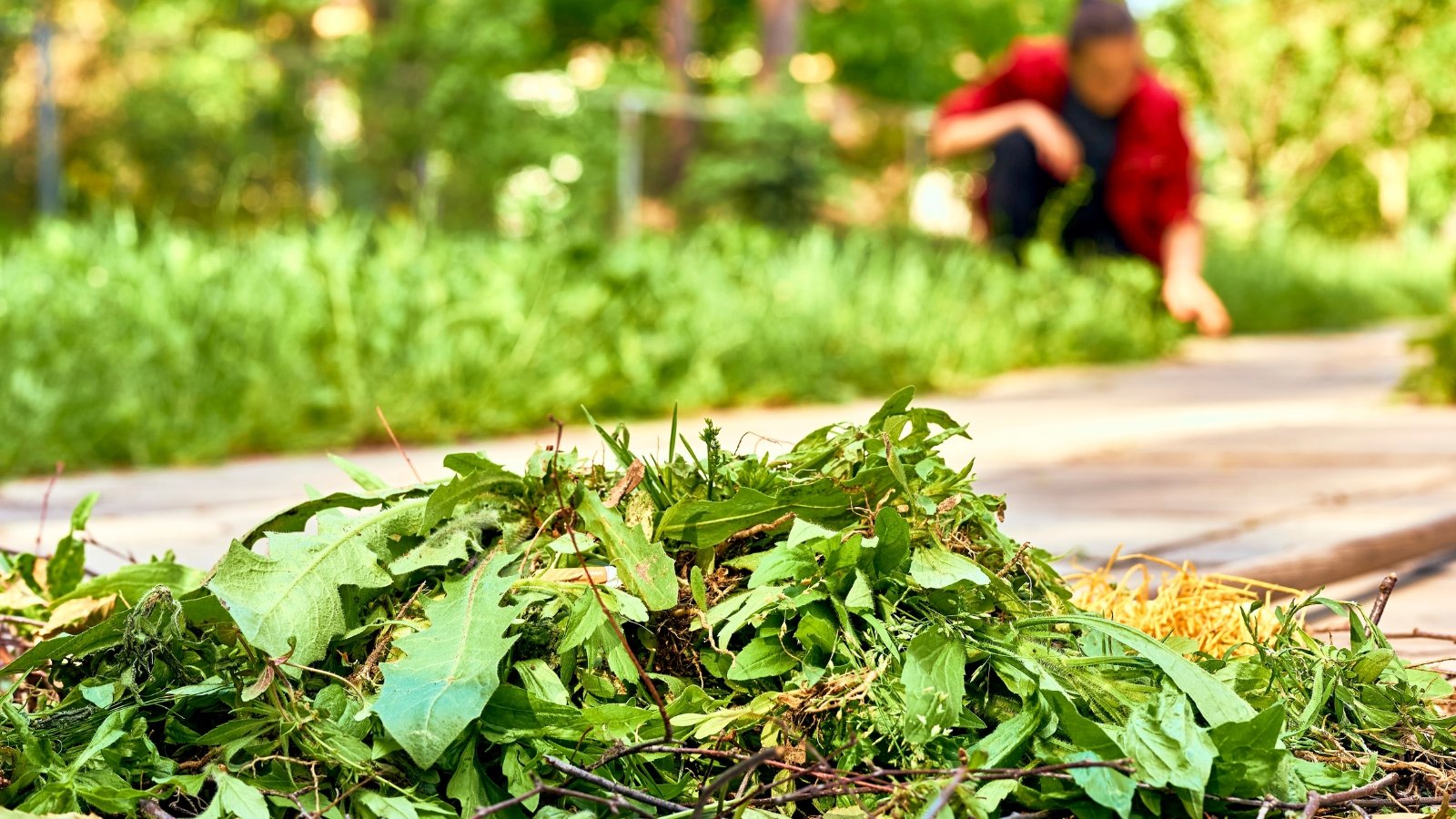
Fall rains and cool temperatures invite cold-loving weed seeds to sprout. You’ll notice popweed, red deadnettle, and dandelions sprouting everywhere! Pluck these wild child plants when they’re young to avoid dealing with them later. Adult weeds like dandelions have deep taproots that anchor them to the ground. Young weeds have weak taproots and pluck out of the ground easily.
Compost weeds for use as fertilizer, unless they’re especially noxious and invasive. Keep English ivy, knotweed, and Himalayan blackberry out of compost piles to prevent them from spreading. Tough invasive species like these can colonize a pile and prevent composting organisms from thriving.
Let these plants suffer first by placing them on hot concrete or asphalt in the sun. Let them wither and die, then chop them up and put them in compost piles. Avoid adding weed seeds to compost unless you tend a hot pile.
Amend Depleted Soils
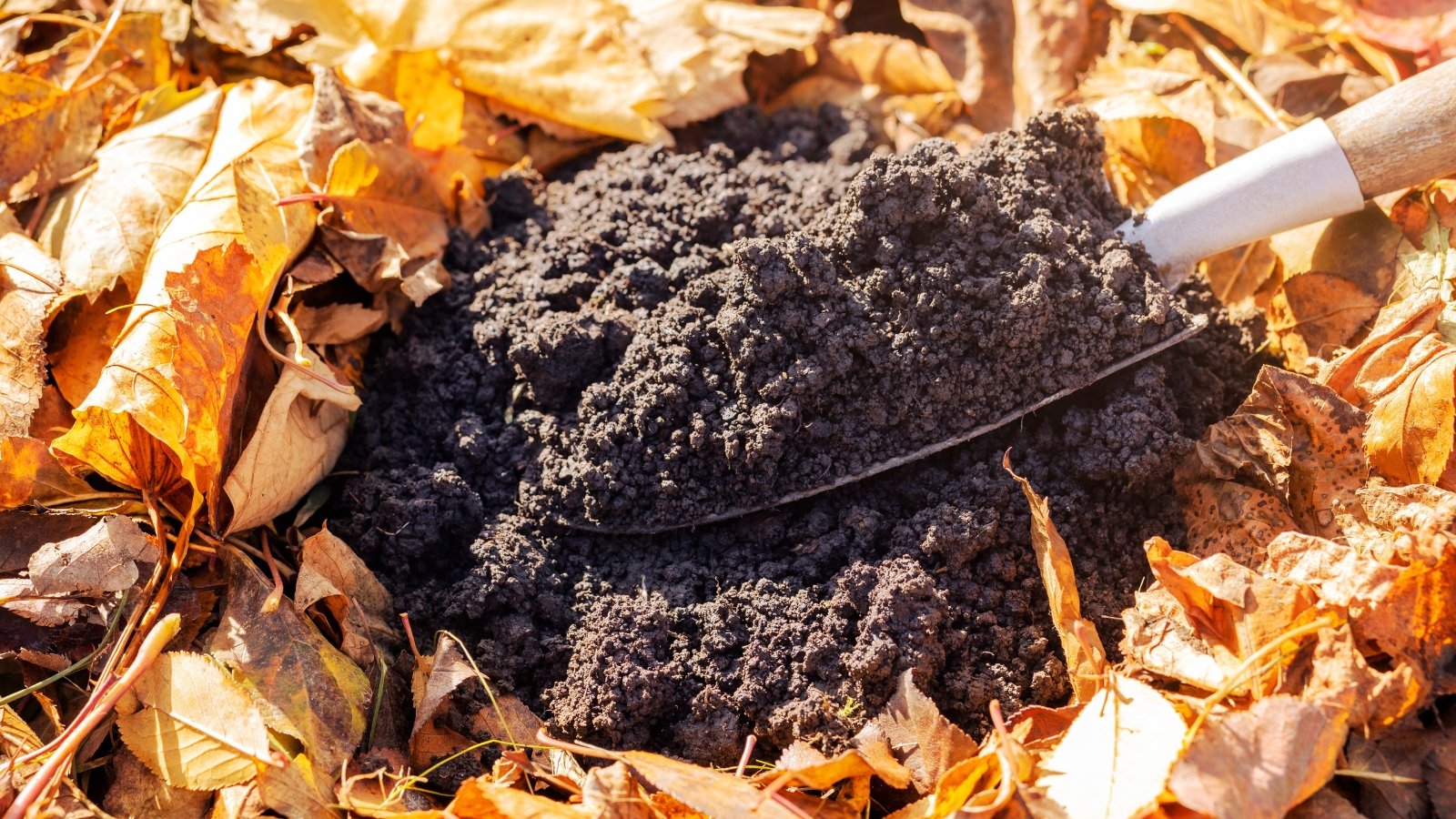
After providing for trees, shrubs, and annual crops all year, your garden beds grow tired and depleted! They may lack the critical nutrients plants need to survive next season. The best way to dose them with more nutrients is with compost. I can’t stress enough how beneficial compost is for your garden! It provides dirt with worms, fungi, bacteria, archaea, algae, and many other organisms that form porous, absorbent, nutrient-rich soil.
If you don’t have compost, try an organic mulch like leaf mold, wood chips, or straw. Dry leaves make an excellent organic mulch—they protect plant roots throughout the winter and enrich the soil. They’ll also help small insects and reptiles stay warm, as they use the leaves as a temporary home during the cold season.
If you don’t have leaves, ask a neighbor or community garden for extra leaves or leaf mold. My local community garden offers leaf mold they compost themselves if you help volunteer for an hour or two. Get crafty, and you’ll be sure to find dozens of free leaf, wood, or straw sources in your community.
Avoid tilling or disrupting soils in October, as many beneficial microbes are active at this time. Fungi start producing fruiting mushrooms above ground that rely on intricate underground mycelia networks. Leave the soil, cover it up, and wait for spring. You may not see the benefits of leaving things be now, but they’ll be evident in spring as more bugs, mammals, and pollinating insects flock to your garden.
Save Seeds
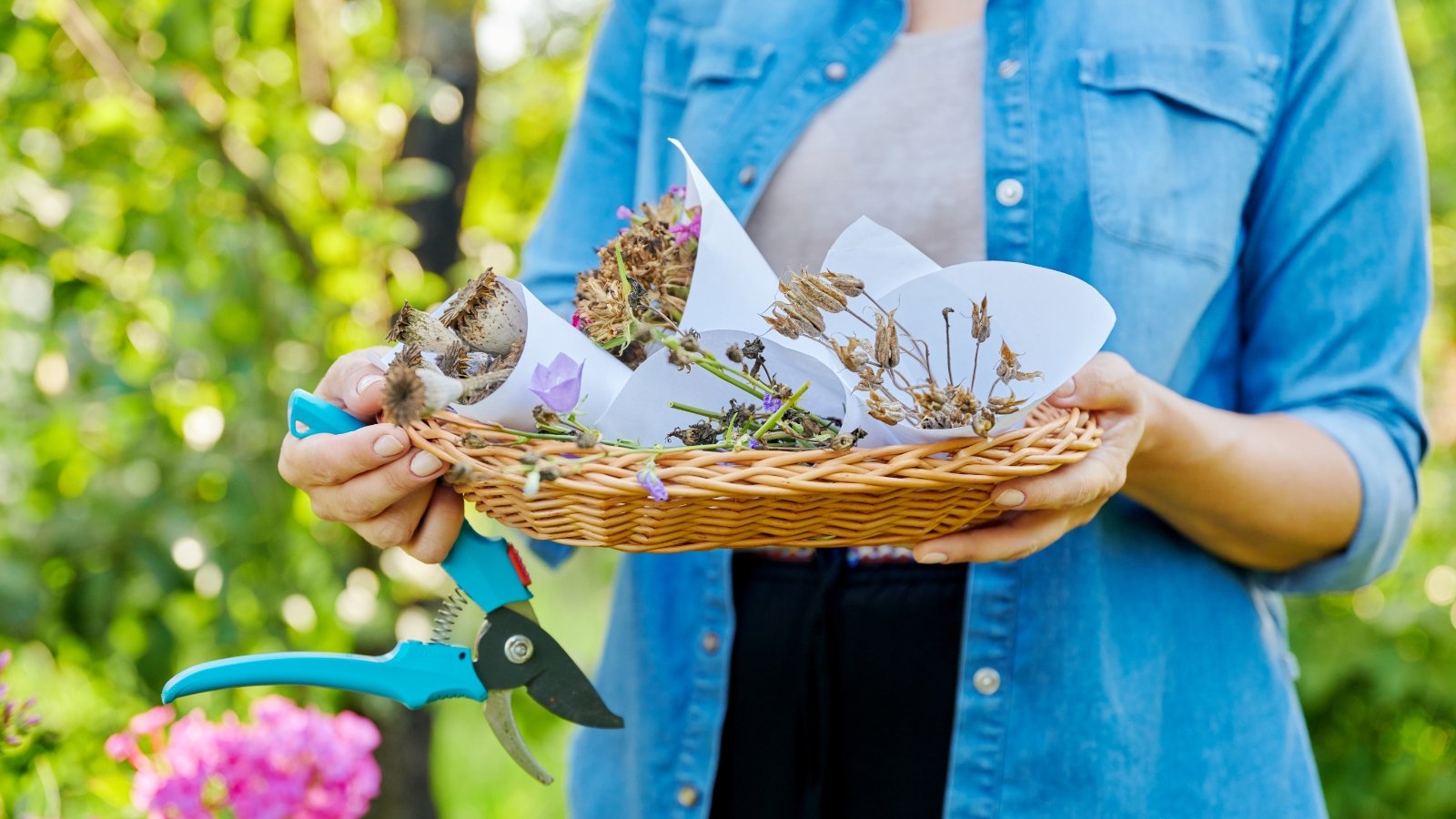
Many plant species have ripe seeds on their stems in October. Harvest them before they fall so you have a supply of seeds for spring. Wet seeds won’t keep well, so look for dry seeds on warm, sunny days. Pick them off the heads and save them. You may also cut plants at their stems and hang them in paper bags. The seeds will fall to the bottom of the bag, and you can easily collect them.
Store dry seeds in sealed containers. Glass, plastic, metal, or paper work well. Place the containers in a cool, dark location like a closet or pantry. Some seeds, like onions, stay viable for a year before deteriorating. Others, like tomatoes, last for three years or longer in storage. No matter the type you’re collecting, seed saving is an excellent way to grow more in tune with your plants and their needs.
Plant Trees and Shrubs
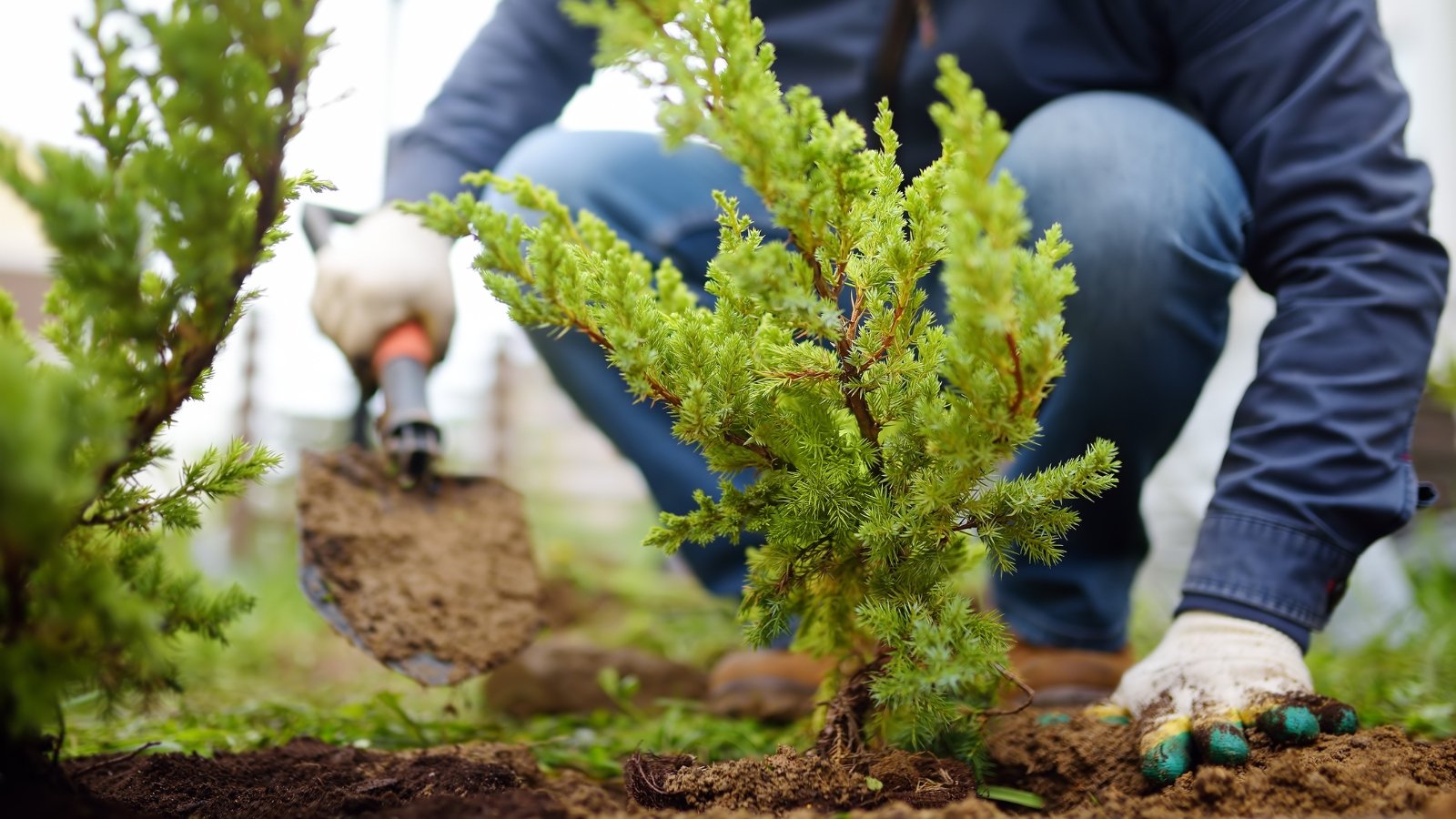
Fall is the ideal season to plant trees and shrubs in most regions throughout North America. Most species enter dormancy during winter, whether they’re evergreen or deciduous. When you plant them in the fall, they grow ample roots underground that help them thrive in spring and summer.
To avoid freeze damage, plant hardy species a month or two before your first frost date. This gives them time to adapt and place roots before freezing temperatures threaten their livelihood. Herbaceous and woody perennials also benefit from an autumn planting, so long as they’re frost-hardy.
To plant trees and shrubs, prepare your site. Dig a hole as deep and twice as wide as your plant’s rootball. If planting trees, use the native soil in your yard. You can amend perennials’ soil with compost to give them an extra boost. Place your plant in the hole, and backfill the dirt until it reaches ground level. Water your specimen well, and continue monitoring it to ensure it adapts well.
Sow Winter Annuals
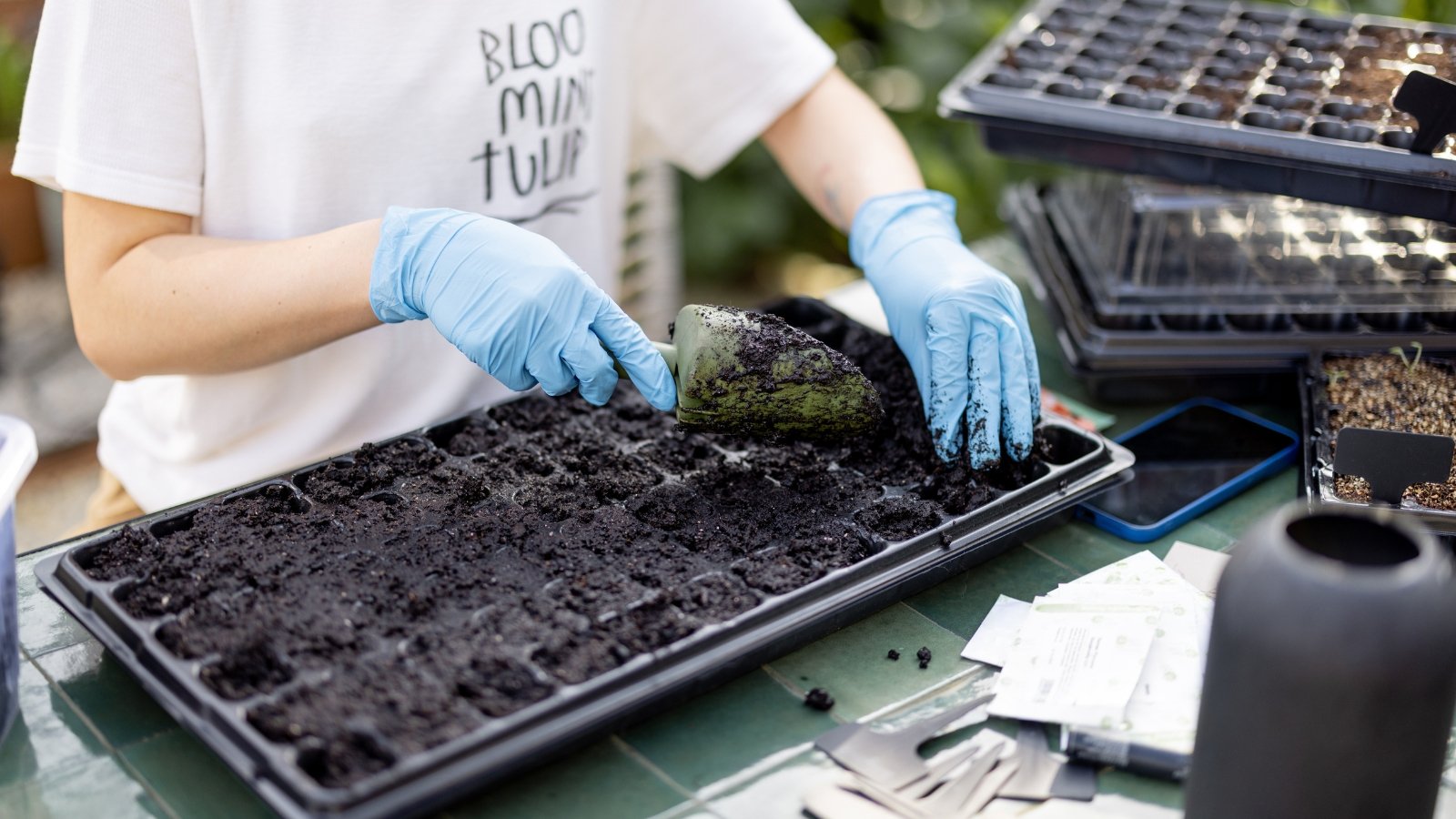
Winter annuals appreciate cool, wet weather. Some need cold temperatures to sprout, while others sprout early but adapt to cold well. What plants to sow also depends on where you live and the conditions of your ecoregion.
Cold-climate gardeners should sow native plant seeds that need cold stratification but should wait until spring to sow tender annuals. October is ideal for mild-climate gardeners to plant annual, perennial, and vegetable seeds that sprout in cool, mild conditions.
Bring In Frost-Tender Houseplants
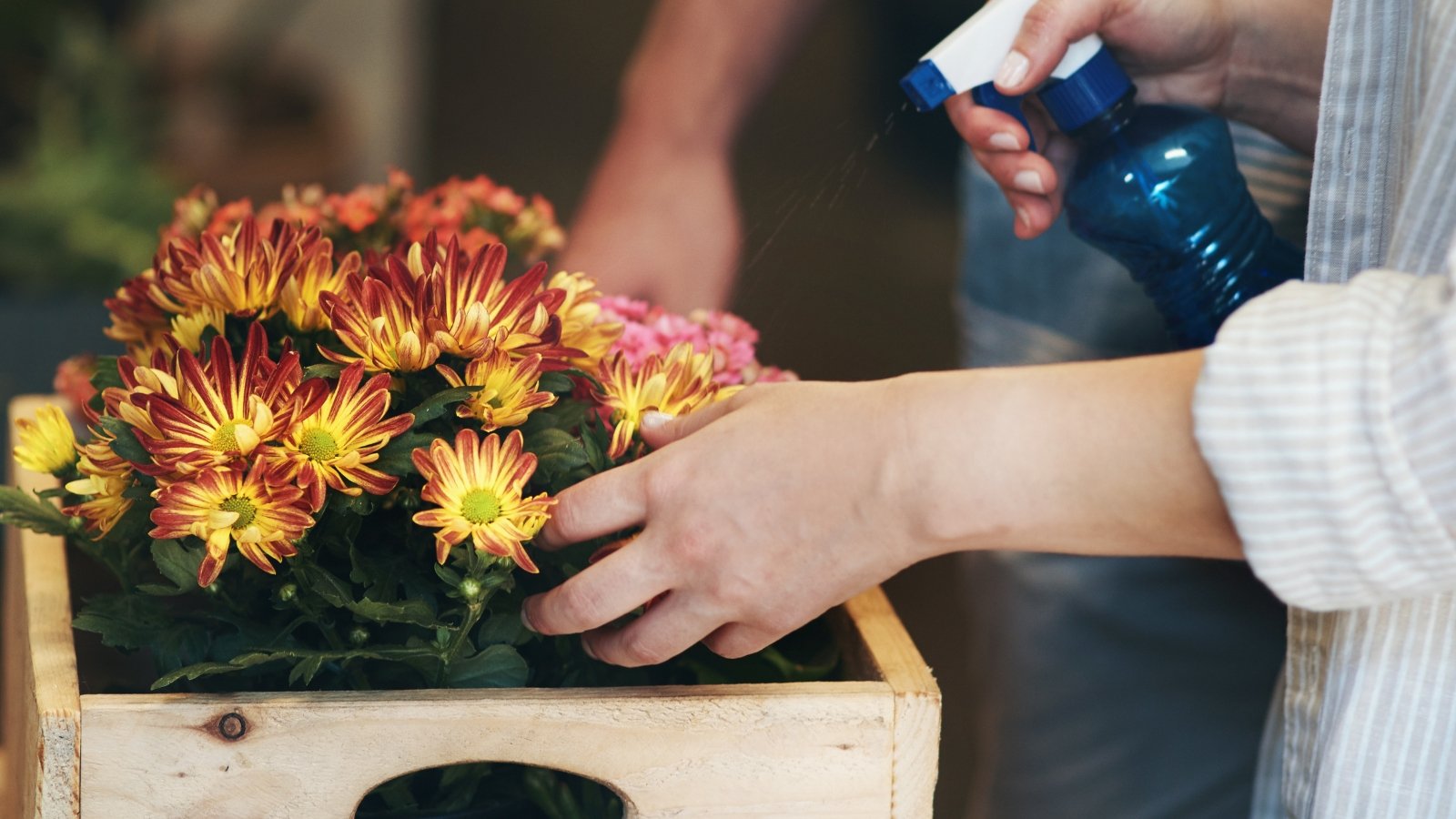
If you’re like me, you have too many houseplants! Maybe you bought more this summer, or you divided your existing ones. Your frost-tender babies need to move to the warm confines of your home before cold temperatures below 50°F (10°C) arrive outside.
Houseplants may house pests that thrive during the warm months. Inspect your plants closely to ensure no pests or diseases are hurting them. Hose them off well with water, then bring them inside to a warm, bright location. Full sun plants outside require bright light all day indoors. Partial to full shade-loving plants tolerate bright or indirect light for three to six hours. Give your plants the conditions they love, and they’ll thrive until spring.
If your plants have pests or diseases, you’ll want to treat them first before bringing them indoors. Pests and diseases spread rampantly indoors without natural predators, wind flow, and rainfall. Use neem oil, horticultural soap, or organic fungicides to treat pests and diseases. Spray treatments away from flowers and shrubs where wildlife roam to avoid damaging the ecosystem.
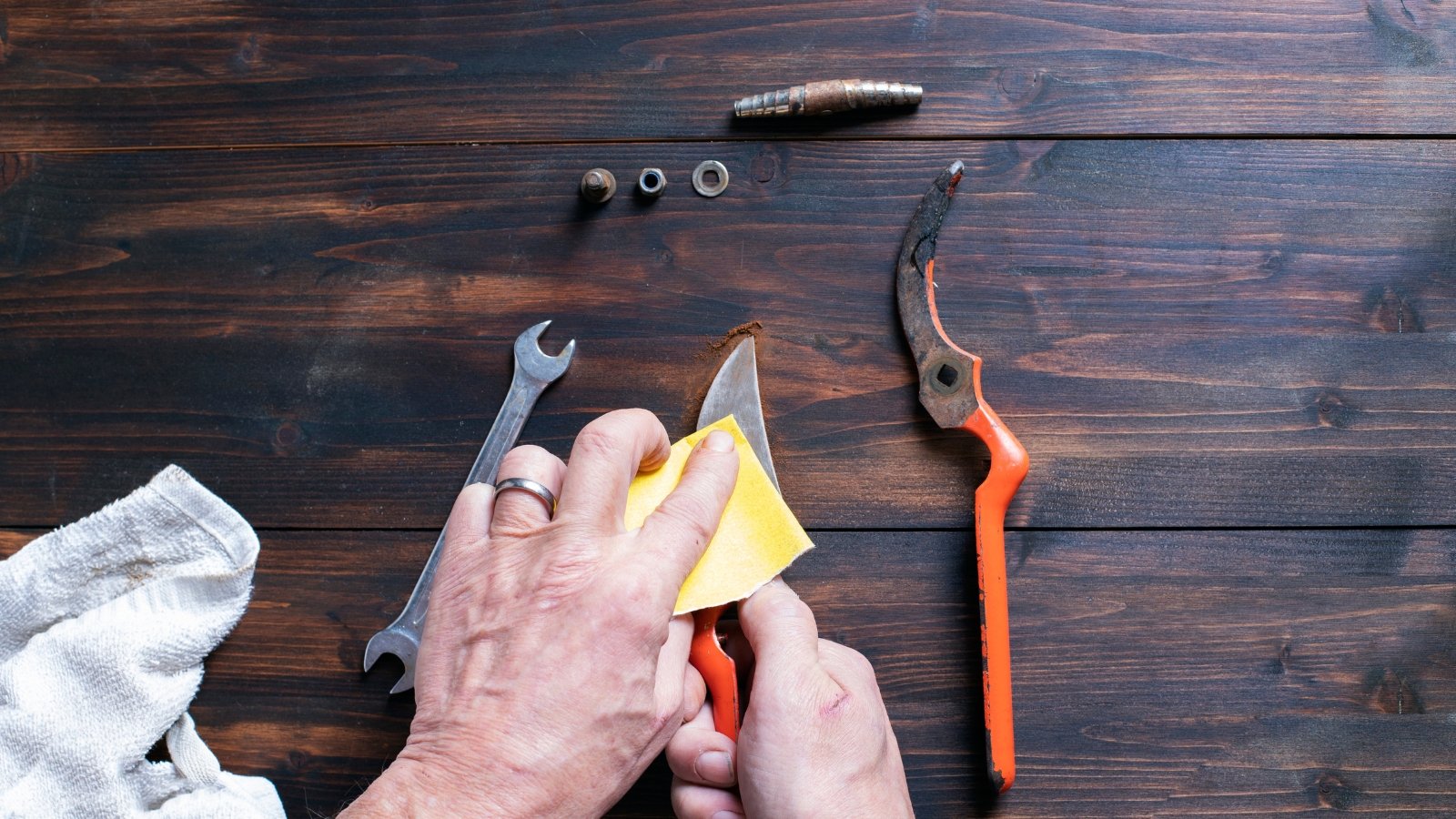
After a long season of pruning, digging, and raking, your tools may be full of dirt and starting to rust, or they’re dull. October is an ideal month for renewing your tools so they work to their full potential next year. Some tools are easy to care for, while others may require the help of a tool sharpener.
Lawnmowers, pruners, loppers, and herbal snips benefit from sharpening, cleaning, and rust protection. Sharpen hand tools with a handheld sharpener. Move the blades away from yourself on the metal three or four times. Clean off the blade, and disinfect the tools with rubbing alcohol. Lawnmowers are tricky—I recommend taking them to a gardening or tool sharpening store where professionals can sharpen them.
Others, like rakes, shovels, and pitchforks, may not require as much care. Rinse them off and dry them, then store the tools inside a dry location. Sheds, outdoor storage closets, and protected awnings are all great places to keep them safe for the winter.
If you notice rust, use rubbing alcohol and a metal scrubber to remove it. Let the tool dry, then store it in a dry area where water won’t reach it. Rust is easy to remove when it’s young, but difficult once it spreads. Clean your tools every October to ensure they stay in tip-top shape for years.



